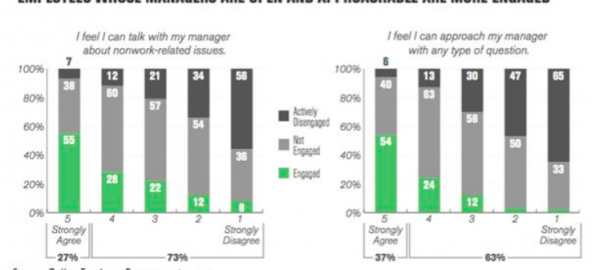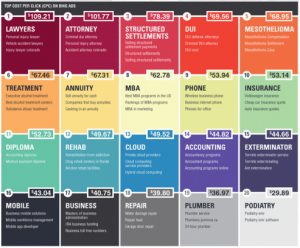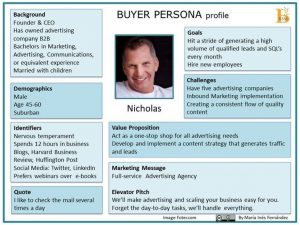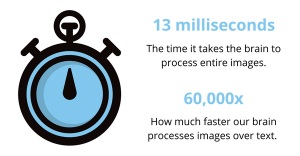— October 19, 2017
The staff turnover is one of the biggest problems that contact centers face today. It has a huge impact on the costs and the quality of service. According to the 2016 US Contact Center Decision Makers’ Guide from ContactBabel.com – the Average annual turnover rate for a customer service representative (CSR) was 29% – an “average lifespan” for a call center worker in the USA was approximately 3.3 years – with quit rates representing 60% of Total Turnover.
| Year-end | Mean annual agent attrtition rate | Median annual agent atrrition rate |
| 2008 | 42% | |
| 2009 | 34% | 24% |
| 2010 | 32% | 20% |
| 2011 | 27% | 16% |
| 2012 | 27% | 21% |
| 2013 | 27% | 19% |
| Mid-2015 | 29% | 18% |
| Mid-2016 | 29% | 20% |
The rate of turnover differs by geography, employment factors and by industry. There is a lower turnover in more specialized, higher level jobs and in union environments.
Turnover rate is much higher in routine, order-taking positions or in outbound telemarketing where burnout is high. Larger Contact Centers tend to have higher turnover than smaller ones.
Staff attrition has consistently been quoted as one of the major worries of contact center management.
A high level of unchecked attrition has a two- headed effect: First, it raises recruitment and staffing costs; Second, it has a ripple effect that can cripple a contact center’s ability to provide an acceptable level of service, creating a negative customer experience, and placing massive stress on those agents who are left.
Regardless of size or industry sector – over time it is a statistically inevitable reality that the demands of call center work causes exhaustion and apathy – and turnover.
Reasons Why Contact Center Agents Quit or Get Terminated
What are the reasons behind the high turnover rate? Like most situations, the answer cannot be reduced to a single factor, but is instead a combination of workplace environmental influences.

- Wrong Candidate for the Job – Just because someone can use a telephone it doesn’t mean that they’re cut out to work in a Contact Center. Employers need to be able to weed out the job candidates who aren’t suited for the work – and identify the people with the personality/job fit/soft skills motivation & work ethic to be (above average) agents.
- Incomplete or minimal training – Everybody knows the story. Due to increasing customer service demands and decreasing numbers of agents, cuts must be made somewhere, and training time is often where the axe falls. While companies who invest less in agent training to not lose as much investment when an agent leaves the company, they suffer indirect losses in other ways. Customer services levels, for instance, are directly affected by the skills of the agent. Those skills must be developed and nurtured to deliver superior customer service. Most of the time, customer service agents are entry-level employees who have little or not experience working in a call center. Without proper training, agents can easily become weighed down by the stress and workload of dealing with unsatisfied customers. To make matters worse, they are also expected to use technology that’s complicated and outdated, not to mention decades apart from the consumer technology these 20-somethings are immersed in on a daily basis.
- Narrow Chances of Career Advancement – According to a recent ProSci study, 12% of call centers surveyed had no formal training program in place for new supervisors. A managerial staff that lacks personal management skills or coaching abilities cannot direct the progress of the call center toward superior customer service levels. Poorly prepared management staff communicates an undesirable message of apathy and frustration to the call center staff.
- Non-Competitive Compensation – Low pay & lack of medical benefits are also key reasons that CSR Quit Rates are high. Many call centers don’t provide their employees with competitive salary and benefit packages, so agents are forced to seek employment elsewhere.
- Overwork and Burnout of More Experienced Agents – In a workforce experiencing high turnover, the burden of maintaining customer service levels fall to the more experienced agents. This
increases the stress level of the seasoned agent, and reduces the motivation for an agent to increase his or her customer service skills. Placed into a position of high expectations with little or no relief or reward in sight can depress the morale of the most buoyant agent. - Unpleasant Physical or Interpersonal Working Conditions – The erratic schedules cause health problems for agents. So is the stress that goes with the high-pressure work environment that can demotivate agents. During times of high turnover, remaining agents may be asked to take on double shifts, leading to many unsatisfactory consequences.
- Exhaustion from Monotony – Performing the same task day after day, with little room for taking on new challenges, can make agents emotionally and mentally exhausted. Most contact centers have strict scripts/pitches and rigid observance to processes in an effort to simplify tasks and achieve consistency in service. However, the downside of these shifts means that agents get to exercise little to no autonomy or creativity in their work. The monotony and lack of challenge in the work leads to burnout.
- Poor Leadership & Direct Supervision – Team leaders are crucial when it comes to employee management and retention. Poor leadership is among the leading factors that drive employees to resign because it results in bad management, lack of teamwork, and messy communication lines. Supervisors, who view their role as overseer and disciplinarian, quickly create an environment of apathy & frustration in their staff.
- Working with Outmoded Technology – Working with cumbersome software that is complicated and non-intuitive diminishes agent productivity, forcing agents to take
on additional, time consuming tasks. They have to search for messages to respond to instead of being assigned the right conversation based on skill specialty, determine the customer’s previous interactions with the company – i.e. asking the customer to repeat themselves on their inquiry, and moving back and forth between different tabs and systems to get customer profiles and history. These deviates the focus from the customer and all efforts goes after the process, which adds to agent stress and frustration. - Poor Analysis of Call Center Statistics (Salt Mine scenario) – The Salt Mine is a call/contact center where the agents are rigorously measured against a variety of call statistics, and punished when those statistics are not met. While call statistics are an incredibly helpful tool in analyzing the performance of a call center, the ultimate goal should be to provide quality customer service, not to decrease call handling time at the expense of both the agents and the customer. Unrealistic expectations are de-motivators, not incentives.
Employee Engagement Techniques to Reduce Turnover
Contact centers have to change their reputation and transition from least favored to most preferred places to work. While there are and unfortunately will always be some poorly managed contact centers, there are also hundreds of organizations where agents are fully engaged, treated with respect, and highly rewarded for their work. Millennials want to feel part of their community, whether at work or at play. The best way to achieve this goal is to set up a work environment where agents feel involved and engaged in everything from the company mission to their contact center team and the customers they serve.
Through employee engagement, companies can boost their employees’ motivation, build confidence in their work, and ultimately lead them to deliver exceptional customer service for long-term customer loyalty. With the onset of the new millennial generation, old and rusty work cultures are rapidly breaking down. This is a cue for businesses that they need to get real insights from their workforce through employee engagement tools and techniques that can motivate and drive workplace satisfaction and productivity.

I. The Rise of Gamification – Gamification is proving to be an effective tool for identifying and recognizing agents and other employees for a job well done. Even better, it is also a self service tool, which means that agents control their own destiny when it comes to recognition and rewards, which frees supervisors and managers from this essential but time-consuming task. Gamification solutions actively engage agents in their own success, which is characteristic of leading contact centers.
The psychology behind gamification is that it uses regular and consistent positive feedback – points, badges, status, progression, etc. – to build up the users’ motivation. Its sudden growth can be attributed to the dramatic and measurable benefits of gamification: up to a 25% increase in productivity, a 90% reduction in training time and a 70% reduction in the cost to onboard a new hire. It also substantially enhances employee engagement. When used correctly, gamification links participant goals to company priorities in a way that makes work fun and increases profits.
II. Compensation – Creating a compensation plan that rewards top employees is an excellent way to drive performance. In the large majority of the employee engagement surveys conducted by TalentMap, compensation receives one of the least favourable ratings among all of the dimensions of employee engagement. An analysis published by Harvard Business Review showed that performance-related pay was positively associated with job satisfaction, organizational commitment, and trust in management. Compensation also serves as recognition in the absence of other cues, messages or signals.
III. Assessing Cultural Fit – Call centers are used to assessing employee performance through hard metrics. This is a key mistake, as academics have noted that employees who fit in well with their job, team and organization have greater job satisfaction, are more likely to remain in their organization, and show superior job performance. Social connectivity is a fundamental and overlooked factor which can often lead to easily-identifiable desirable action. Hiring managers can start measuring social dynamics by being open and honest with themselves and with colleagues about the call center social environment: what kind of person will succeed here. Social profiling and data analysis can be a key ‘voice in the room’, giving additional weight to decisions over which course of action to take.
IV. Competent Technology, Tools and Training – To deliver their best, agents should be given the latest technology for excellent omnichannel customer service and receive the proper training required to master these tools. Using a contact center software solution with advanced features ensures quicker and more efficient service, and thorough training will help agents feel prepared for each interaction. According to the “Emerging Workforce Study”, 41% of employees plan to leave organizations with a “poor” training score as opposed to just 12% for those organizations with a rating of “good”. With in-depth training sessions through e-learning, virtual assistance, and scripting tools, clearly establish company goals and expectations and provide your agents the confidence to tackle any initiative.
Empower Employees to Quickly Resolve Customer Needs – For every 1% improvement in first call resolution rate, contact centers will see a 1% improvement in customer satisfaction rates, and a 1- 5% improvement in employee satisfaction. But how can one improve first call resolution rates?
- Database management integrations (CRM, WFM, Ticketing, etc.) with your call center solution to offer immediate access to all client records
- Use of advanced call routing tools to match customers to agents based on skill-sets
- Use of advanced call center scripting solutions to empower employees to quickly resolve customer needs and improve their overall job satisfaction
V. Experiment with Team Structure – We increasingly need to recruit people to integrate into a fast-paced team: according to McKinsey, 40% of jobs in developed economies involve a high degree of collaboration. Switch your agents tasks on occasion, encourage collaboration, and create team- building exercises. It will facilitate agent enthusiasm and interest, while keeping them on their toes. Communication and sharing of knowledge between individuals has a huge impact on customer service performance: the happier an employee is in their environment, the more engaged that person will be in his or her day-to-day job. More and more companies are using data- driven personality testing to help them in these crucial managerial decisions.
VI. Go Beyond the Metrics – While it is extremely important, if not essential, to monitor agent performance metrics (service level, agent schedule adherence, call resolution, average handle time, customer satisfaction) it shouldn’t never be the sole means by which to define an employee’s capabilities and potential. In fact, many call center employees site the narrow grading metrics contact centers generally adhere to as a key cause of in-office stress and lack of productivity. Supervisors must recognize there are other factors at play that could be interfering with an agent’s performance. Regardless of whether employees are performing “well” or “poorly”, reach out to each and review what is working and what is not—the findings could very well provide key insights otherwise unavailable using traditional KPIs.
VII. Communication – Communication is a powerful tool that can have an enormous impact on the success of any organization. Effective communication can increase employee engagement, boost workplace productivity, and drive business growth. Communication is the cornerstone of an engaged workforce. Specifically, communicating strategies about career development and management can be essential to retaining an existing work force, and engaging employees to perform at their peak ability. Research shows that keeping employees informed with personal, relevant, and engaging communication gives companies a competitive edge and has direct results on the bottom line.
VIII. Allowing Downtime – Your workers are people, and people need downtime. There’s a growing trend of companies looking to utilize their employees’ downtime for good, or at least to not let their employees’ inevitable breaks go completely to waste. Rather than forcing employees to take very short breaks, and logging those breaks fastidiously, managers should encourage groups of employees to take breaks at the same times. By doing this, employees will spend more time together, encouraging social bonding. A well known MIT study tested just this: by ensuring that everyone on the same call center team took a break at the same time, a bank’s call center AHT fell by more than 20 percent among low performing teams, and fell by 8 percent overall. Canada and the EU have call center turnover rates of 25 percent and 15 percent respectively, far higher than the 33 percent rate seen in the US. It’s often said that the work environment in Canada and the EU countries is more relaxed and flexible than in the US: perhaps this is one reason behind the difference.
IX. Optimize the Workspace – Given the intense nature of a contact center, a workspace optimized for comfort and productivity is absolutely necessary. A lounge is a great way to show appreciation for agents’ well-being and to encourage employees to socialize during their downtime. For training and meeting purposes, open and collaborative spaces are ideal. Ergonomic chairs and supplies and even standing desks can increase comfort, as well as natural lighting, warm colors, and plants which are proven to boost people’s moods and creativity.
X. Provide Meaningful Rewards and Recognition – Employees stay where they feel appreciated. Encourage individual management recognition but also develop organizational recognition vehicles. Simple recognition of jobs well done in the quarterly newsletter, pictures on the bulletin board, dinner gift certificates, and other small rewards provide a high return on investment. Companies with employee recognition programs experience a 22% lower turnover rate than organizations without one. Using a combination of rewards, public recognition, one-on-one praise, and promotions, create a healthy environment in which agents feel appreciated and valued. A little competition between peers is also a great way to drive productivity but should never be the sole means of measuring agent performance and contributions.
XI. Promoting Good Leadership – Being an empathetic manager that is willing to get to know their people beyond work have more engaged teams.
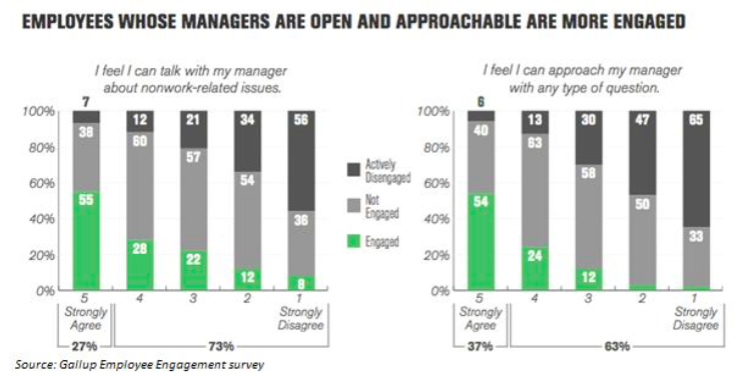
XII. Establish Growth Opportunities – An astounding 32% of contact center employees cite “lack of career development opportunities” as a reason for terminating their employment. As a supervisor, if you fail to clearly present and offer opportunities for advancement it is extremely likely employees fail to see the long-term benefits of staying. Ensure development opportunities are clearly established and communicated to agents on a continuous basis. It will encourage them to remain with the company while striving to reach for those elevated opportunities.
XIII. Covet Community Service As Much As Customer Service – People are inspired by and want to work for companies that care about all human beings – not just customers and employees. You are much more likely to hang on to talented staff if you can show them the reason their wages are so laughable is that half of what they should earn goes toward feeding the hungry, housing the homeless, and rehabbing former child TV stars. Also, be sure to give agents a few paid days off each year to volunteer for their favorite charity/non-profit organization; the time off the phones will help to minimize their whining about back pain and Carpal Tunnel flare ups.
Contact centers are challenging but highly rewarding departments in which to work. The influx of Millennials is driving companies to assess and re-evaluate their people engagement approaches and practices. Many companies are realizing that they need to make changes and investments if they want to have a contact center with highly motivated and engaged employees, and become an employer of choice. Workforce management, agent self-service and gamification applications provide tools that empower and engage agents to bring out the best in them. Undoubtedly, this will help to improve agent satisfaction and retention, but it will also have a positive impact on customer satisfaction and the bottom line, as agents who are engaged and empowered are willing to take ownership and will do what it takes to resolve customer issues and keep customers happy.
Business & Finance Articles on Business 2 Community
(92)
Report Post